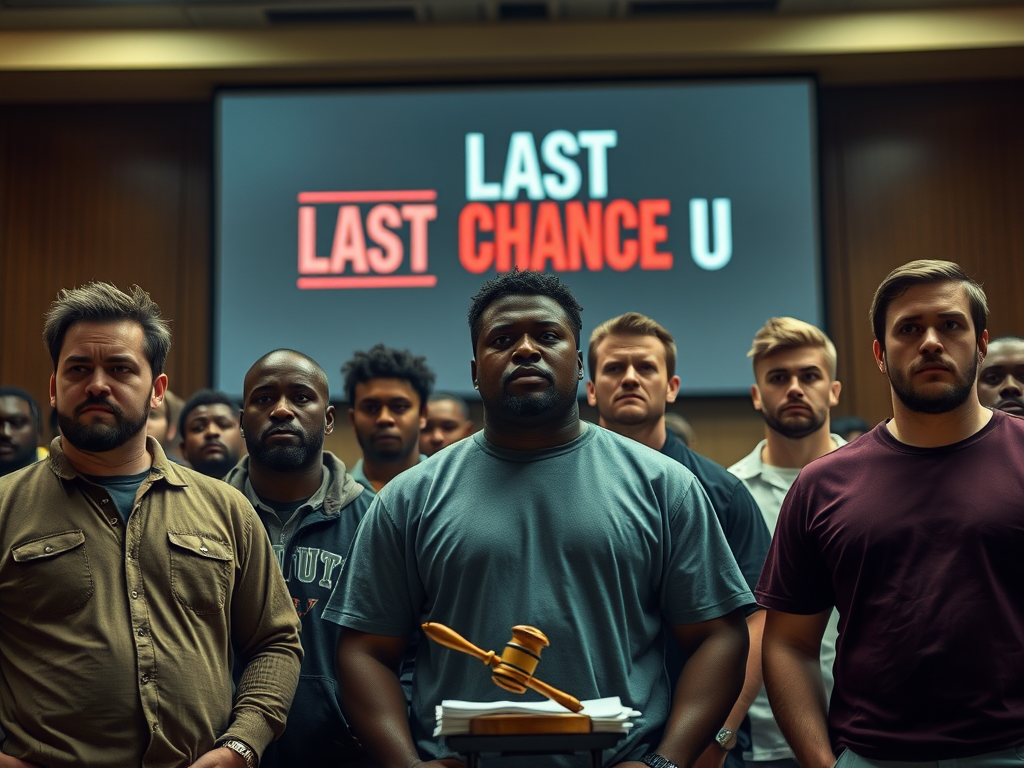The allure of fame can be both a blessing and a curse—especially when your story is told by someone else. For six former junior college football players, what seemed like an opportunity to showcase their talent and resilience turned into a nightmare. Their struggles, sacrifices, and triumphs were packaged into binge-worthy drama, but at a cost they never agreed to. Now, they’re striking back with a $30 million lawsuit, accusing Netflix, East Mississippi Community College (EMCC), the National Junior College Athletic Association (NJCAA), and production company Conde Nast of cashing in on their names, images, and reputations—while they got nothing in return.
At the heart of the lawsuit is a damning accusation: these athletes were duped into signing away their publicity rights, unknowingly handing over control of their personal narratives at a time when NIL (Name, Image, and Likeness) deals were non-existent. Their fight isn’t just about money; it’s about dignity, respect, and setting the record straight.
The Price of “Fame”
When Last Chance U first hit Netflix, it gripped audiences with its raw, unfiltered portrayal of junior college football. The series promised to spotlight underdog athletes battling for a second shot at stardom. But according to the plaintiffs, what was marketed as an inspirational docuseries was, in reality, a carefully curated spectacle where they were unfairly cast as villains to boost ratings.
The lawsuit claims that instead of accurately portraying their journey, Netflix and its partners distorted their personalities, exaggerated conflicts, and painted them in a misleading light—all while raking in millions from streaming deals, merchandise, and sponsorships. Meanwhile, the players—the very lifeblood of the show’s success—were left with damaged reputations and zero compensation.
One of the lead plaintiffs, former EMCC quarterback John Franklin III, knows firsthand how Last Chance U shaped public perception. Once a promising recruit at Florida State, Franklin transferred to EMCC in search of a fresh start. He later played at Auburn, Florida Atlantic, and briefly in the NFL. Yet, instead of being remembered for his talent, Franklin argues that the show twisted his story for dramatic effect, impacting his career and personal life.
Franklin wasn’t alone. Other players, including Ronald Ollie and Isaiah Wright, found themselves painted as “problematic” characters, turning real-life struggles into entertainment fodder. And according to them, this wasn’t just storytelling—it was exploitation.
A Battle for Justice—or a Game-Changer for College Athletes?
The lawsuit doesn’t just take aim at Netflix; it also raises a broader, more pressing issue: should past injustices in college athletics be ignored just because NIL laws have changed?
At the time of filming, NCAA and NJCAA athletes were barred from profiting off their own names, images, and likenesses. While today’s college players can sign lucrative NIL deals, these Last Chance U athletes had no such opportunity. Now, they’re demanding accountability—not just for themselves, but for every athlete who was used as a pawn in the billion-dollar machine of college football.
Their lawyer, John Pierce, didn’t mince words in the legal filing:
“Make no mistake, each of the defendants have been unjustly enriched by intruding upon the private lives of the plaintiffs, taking unfair advantage of them through their superior bargaining power, manipulating many of the plaintiffs’ characters, along with other means of their own financial gain while sacrificing any decent reputation plaintiffs had.”
In other words? These players weren’t just part of a documentary. They were the product itself.
Will Netflix and EMCC Pay Up?
For now, Netflix, EMCC, and the other defendants have remained silent, offering no comment on the lawsuit. But with $30 million on the line and a growing conversation around player rights, this case could set a game-changing precedent for past college athletes who had their stories sold without a cut of the profits.
If the lawsuit succeeds, it could open the floodgates for similar claims from former athletes whose images were used in TV shows, video games, and marketing campaigns without their consent or compensation.
As the legal battle unfolds, one thing is clear: these players are no longer just characters in someone else’s story. They’re taking control of their own narrative—and this time, they won’t be playing for free.















